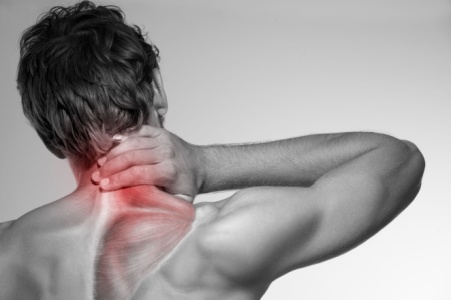Blog
Items filtered by date: August 2025
Relieving Elbow Pain in Golfers

Golfer's elbow, or medial epicondylitis, is an overuse injury that affects the tendons on the inner side of the elbow. It typically results from repetitive activities that put strain on the elbow, such as sports like golf, baseball, and tennis in addition to certain physical work tasks. The most common symptom of golfer’s elbow is pain felt along the forearm on the same side as the pinky. This pain is likely worse when bending the wrist toward the palm or when squeezing an object in your fist. Factors contributing to golfer's elbow include poor technique during physical activities, lack of strength or flexibility in the forearm and shoulder muscles, and use of inappropriate equipment. A chiropractor can assess the alignment of the elbow, neck, and spine, as well as any muscle imbalances and nerve restrictions. If elbow pain persists, it is suggested that you schedule an appointment with a chiropractor for appropriate treatment options.
Elbow pain can make even simple tasks challenging, often resulting from repetitive movements, strain, or injuries. Conditions like tennis elbow, golfer’s elbow, and nerve entrapment are common culprits, leading to inflammation and discomfort in the tendons or surrounding tissues. Whether caused by sports, work activities, or an accident, persistent elbow pain can hinder mobility and strength.
Symptoms may range from sharp pain and stiffness to numbness or a weakened grip, interfering with daily life. While pain relief methods like rest can help, they may not address the underlying problem.
Chiropractic care focuses on identifying and treating the source of elbow pain. Through gentle adjustments, soft tissue therapies, and targeted exercises, chiropractors relieve tension, improve joint function, and reduce inflammation. This holistic approach helps not only to ease pain but also to prevent future issues, ensuring long-term comfort and mobility.
1. How does spinal alignment affect elbow pain?
Misalignments in the spine can compress nerves that travel to the arm, leading to referred pain or tension in the elbow. Correcting alignment helps relieve this pressure and improve function.
2. How can chiropractic care help prevent recurring elbow injuries?
Chiropractors identify movement patterns or misalignments that contribute to strain and provide strategies to improve mechanics. This reduces the likelihood of reinjury.
If you have any questions please feel free to contact our office located in Tulsa, OK .
Chronic Headache Relief Through Alignment

If you suffer from chronic headaches, they may be linked to tension, nerve pressure, or strain in the neck and upper back. These factors can affect nearby nerves and contribute to ongoing headache pain. Gentle adjustments may help ease tension, improve alignment, and support better nerve function.
Find lasting relief from headache pain. Schedule your appointment today.
Carpal Tunnel Syndrome Facts and Chiropractic Care

Carpal tunnel syndrome occurs when the median nerve in the wrist becomes compressed, leading to pain and limited hand function. Common causes include repetitive hand movements, wrist injuries, arthritis, and conditions that cause swelling in the wrist. Symptoms often include numbness, tingling in the fingers, swollen fingers, weakness, pain, and loss of movement in the hand. Left untreated, it can interfere with daily activities and reduce grip strength. A chiropractor can help by addressing joint misalignments, improving wrist mobility, and reducing pressure on the median nerve through targeted therapies. If you are experiencing symptoms of carpal tunnel syndrome, it is suggested that you schedule a chiropractic appointment to relieve discomfort, restore function, and protect long-term hand health.
Carpal Tunnel Syndrome
Carpal tunnel syndrome, or CTS, is a condition caused by compression of the median nerve, which runs through the carpal tunnel in the wrist. This tunnel is a narrow passageway surrounded by bones and ligaments, and when it becomes compressed or inflamed, it can put pressure on the nerve. Symptoms of CTS include tingling, numbness, weakness, and pain in the hand and fingers, often making simple tasks difficult and uncomfortable.
Chiropractic care offers a non-invasive approach to managing CTS by addressing alignment and reducing nerve pressure. Chiropractors start by evaluating the wrist, elbow, and even the cervical spine or neck, as misalignments in these areas can contribute to nerve compression in the wrist. Through gentle adjustments, chiropractors can improve the alignment of the wrist and spine, helping to reduce the pressure on the median nerve.
In addition to adjustments, chiropractors may use soft tissue therapy, such as stretching and myofascial release, to reduce inflammation surrounding the wrist and enhance mobility.
Why Consider Chiropractic for CTS?
Chiropractic care can provide lasting relief by targeting the root causes of CTS, reducing pain, and promoting long-term hand and wrist health.
Can Chiropractic Care Address Repetitive Strain as a Cause of CTS?
Chiropractic care can help manage repetitive strain by improving joint alignment and recommending ergonomic adjustments.
If you have any questions, please feel free to contact our office located in Tulsa, OK .
Common Causes of Back Pain and Chiropractic Guidance

Back pain is a frequent complaint that can interfere with daily activities and quality of life. Muscle strains from lifting heavy objects or sudden movements are a leading cause. Exercise injuries, especially from improper form or overexertion, can also contribute to discomfort. Trauma from falls or accidents may damage soft tissue or spinal structures. Emotional stress can lead to muscle tension and persistent tightness in the back. A chiropractor can identify the source of pain and provide targeted spinal adjustments, soft tissue therapy, and posture correction to relieve discomfort and prevent recurrence. If back pain is affecting your life, it is suggested that you consider visiting a chiropractor for expert care and a personalized plan to restore comfort and function.
Back pain
Finding Lasting Relief for Back Pain Through Chiropractic Care
Back pain is one of the most common issues people face, often caused by poor posture, muscle strain, or spinal misalignment. This pain can range from a dull ache to sharp, debilitating discomfort, affecting daily life and mobility. Chiropractic care offers a non-invasive, drug-free approach to managing and relieving back pain by addressing its root causes.
Chiropractors assess spinal alignment and look for areas of tension, misalignment, or restricted movement that may contribute to back pain. Using targeted spinal adjustments, chiropractors help realign the vertebrae, relieving pressure on nerves, and reducing inflammation. These adjustments encourage natural healing, reduce muscle tension, and improve overall spinal function, which can lead to lasting relief.
In addition to adjustments, chiropractors often recommend exercises to strengthen core and back muscles, supporting proper posture and spinal alignment. They may also offer guidance on adjustments for daily activities to prevent further strain. Lifestyle recommendations, such as stretches, proper lifting techniques, and movement tips, help patients maintain a healthy back.
How Often Should I See a Chiropractor for Lower Back Pain?
Frequency depends on the severity of pain, but many patients benefit from regular visits to maintain alignment and pain relief.
Why Choose Chiropractic Care for Back Pain?
Chiropractic care provides a comprehensive approach to managing back pain, promoting long-term relief and better spinal health without reliance on medications. Regular visits can lead to improved mobility, reduced pain, and a healthier, more active life.
How Quickly Can I Expect Relief from Back Pain with Chiropractic Care?
Relief varies, but many patients experience reduced pain and improved function after just a few sessions
If you have any questions, please feel free to contact our office located in Tulsa, OK .
Relief for Pinched Nerves and Chiropractic Care

A pinched nerve occurs when surrounding tissues, such as bones, muscles, or tendons, apply excessive pressure on a nerve. This compression can disrupt normal nerve function and lead to symptoms such as sharp pain, tingling, numbness, or muscle weakness. Common causes include poor posture, spinal misalignment, herniated discs, or repetitive stress injuries. Chiropractic care offers a noninvasive approach to treating pinched nerves by restoring proper alignment to the spine and relieving pressure on the affected nerve. Gentle adjustments, stretching, and therapeutic exercises promote healing and reduce inflammation. If you are experiencing symptoms of a pinched nerve, consider visiting a chiropractor to start your path to relief and improved function.
Pinched Nerve
A pinched nerve occurs when surrounding tissues, such as bones, muscles, or tendons, apply excessive pressure on a nerve. This condition can cause pain, numbness, tingling, or weakness, often in the neck, back, or limbs. Everyday activities, poor posture, or repetitive motions are common triggers. Left untreated, the condition may worsen, leading to chronic discomfort and reduced mobility.
Chiropractors use a hands-on approach to relieve the pressure that causes a pinched nerve. By performing gentle spinal adjustments, they create space for the nerve to function properly, alleviating discomfort. Chiropractic care may also include stretching exercises to improve flexibility and targeted muscle work to reduce surrounding tension. Patients often receive guidance on posture and activity modifications to prevent recurrence. This tailored approach focuses on restoring normal nerve function and improving overall quality of life.
1. Are pinched nerves only caused by spinal issues?
No, they can also result from tight muscles, inflammation, or repetitive strain. Chiropractors address both spinal and muscular causes.
2. How does a chiropractor determine the location of a pinched nerve?
Chiropractors use physical exams, mobility tests, and sometimes imaging studies like X-rays to pinpoint the source of nerve compression.
For additional information, please contact our office located in Tulsa, OK .
